Had a few days off, so I'll actually post something! I picked this one up a few months ago as an easy project. It's an otherwise matching Gew 71 that some knucklehead knocked the rear sight off somewhere along the line. Fortunately I sourced a spare sight base and leaf assembly, so it was an easy fix to solder a new one on. The only other quirk was a replacement front sling loop on the band..
The biggest reason I bought it was that the rifle itself is one of the elusive British-produced ones from National Arms and Ammunition in Birmingham. The story is outlined in another post, but I will link below

 www.k98kforum.com
www.k98kforum.com
These had an abysmal survival rate like most non-Amberg 71s, so it was nice to find an honest, albeit salty and well-carried example. It is also matching except for the rear sight assembly. This one has the WW1-era steel triggerguard and there is still some of the black paint remaining.
There are a few peculiarities with these and I'll try to outline the differences. Naturally, the NAA triangle logo is the most apparent; along with the near-total lack of Prussian crown inspection stamps. Other quirks include:
- Bolt acceptance is on top of the bolt. Naturally, British style
- Stock is not internally numbered at all-- there is a SN parallel to the buttplate on the left rear of the stock. Internally there are only a few inspection markings.
- There is a SN suffix on the bayonet lug/nosecap
- The only acceptance I see is on the right side of the stock (Cypher and stamps) and a single acceptance stamp on the barrel.
At first I thought the unit marking was the 1st Infantry Regt, Ersatz batallion, 1st company, but there may be a character in front of the "1"- (maybe a 3?) It's hard to tell with the wear/oxidization on the buttplate flat. I'll get a closer look next time I have it out.

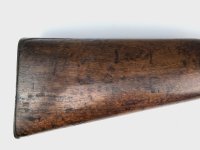
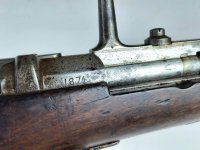

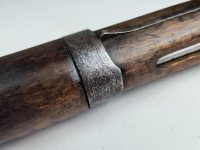
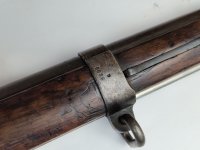
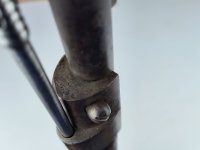
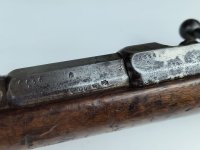
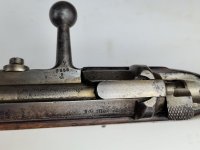
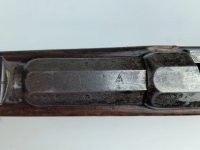
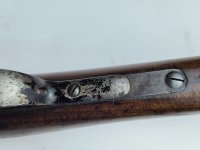
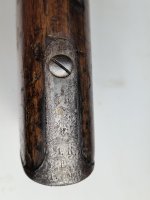
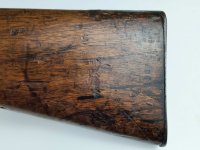
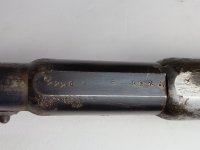
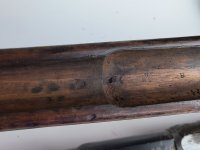
The biggest reason I bought it was that the rifle itself is one of the elusive British-produced ones from National Arms and Ammunition in Birmingham. The story is outlined in another post, but I will link below
National Arms and Ammunition Co. Birmingham Gewehr 71
Hi All, These rifles have interested me since learning about them several years ago. The notion of a British-made M71 is a curious one. According to Storz, a contract for 150,000 rifles was signed with NA&A in Birmingham. Only around 100,000 were delivered, apparently due to Prussian...
These had an abysmal survival rate like most non-Amberg 71s, so it was nice to find an honest, albeit salty and well-carried example. It is also matching except for the rear sight assembly. This one has the WW1-era steel triggerguard and there is still some of the black paint remaining.
There are a few peculiarities with these and I'll try to outline the differences. Naturally, the NAA triangle logo is the most apparent; along with the near-total lack of Prussian crown inspection stamps. Other quirks include:
- Bolt acceptance is on top of the bolt. Naturally, British style
- Stock is not internally numbered at all-- there is a SN parallel to the buttplate on the left rear of the stock. Internally there are only a few inspection markings.
- There is a SN suffix on the bayonet lug/nosecap
- The only acceptance I see is on the right side of the stock (Cypher and stamps) and a single acceptance stamp on the barrel.
At first I thought the unit marking was the 1st Infantry Regt, Ersatz batallion, 1st company, but there may be a character in front of the "1"- (maybe a 3?) It's hard to tell with the wear/oxidization on the buttplate flat. I'll get a closer look next time I have it out.















